Small nucleolar RNA 42 acts as an oncogene in lung tumorigenesis
- PMID: 21986946
- PMCID: PMC4966663
- DOI: 10.1038/onc.2011.449
Small nucleolar RNA 42 acts as an oncogene in lung tumorigenesis
Abstract
Non-small cell lung cancer (NSCLC) is the leading cause of cancer death, reflecting the need for better understanding the oncogenesis, and developing new diagnostic and therapeutic targets for the malignancy. Emerging evidence suggests that small nucleolar RNAs (snoRNAs) have malfunctioning roles in tumorigenesis. Our recent study demonstrated that small nucleolar RNA 42 (SNORA42) was overexpressed in lung tumors. Here, we investigate the role of SNORA42 in tumorigenesis of NSCLC. We simultaneously assess genomic dosages and expression levels of SNORA42 and its host gene, KIAA0907, in 10 NSCLC cell lines and a human bronchial epithelial cell line. We then determine in vitro functional significance of SNORA42 in lung cancer cell lines through gain- and loss-of-function analyses. We also inoculate cancer cells with SNORA42-siRNA into mice through either tail vein or subcutaneous injection. We finally evaluate expression level of SNORA42 on frozen surgically resected lung tumor tissues of 64 patients with stage I NSCLC by using quantitative reverse transcriptase PCR assay. Genomic amplification and associated high expression of SNORA42 rather than KIAA0907 are frequently observed in lung cancer cells, suggesting that SNORA42 overexpression is activated by its genomic amplification. SNORA42 knockdown in NSCLC cells inhibits in vitro and in vivo tumorigenicity, whereas enforced SNORA42 expression in bronchial epitheliums increases cell growth and colony formation. Such pleiotropy of SNORA42 suppression could be achieved at least partially through increased apoptosis of NSCLC cells in a p53-dependent manner. SNORA42 expression in lung tumor tissue specimens is inversely correlated with survival of NSCLC patients. Therefore, SNORA42 activation could have an oncogenic role in lung tumorigenesis and provide potential diagnostic and therapeutic targets for the malignancy.
Conflict of interest statement
The authors declare no conflict of interest.
Figures

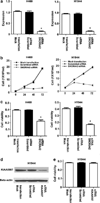
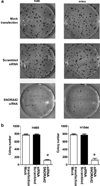

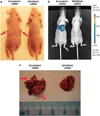
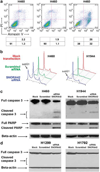
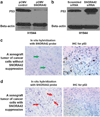
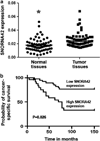
Similar articles
-
Small nucleolar RNA signatures of lung tumor-initiating cells.Mol Cancer. 2014 May 6;13:104. doi: 10.1186/1476-4598-13-104. Mol Cancer. 2014. PMID: 24886050 Free PMC article.
-
Clinical significance of SNORA42 as an oncogene and a prognostic biomarker in colorectal cancer.Gut. 2017 Jan;66(1):107-117. doi: 10.1136/gutjnl-2015-309359. Epub 2015 Oct 15. Gut. 2017. PMID: 26475630 Free PMC article.
-
Long non-coding RNA CARLo-5 is a negative prognostic factor and exhibits tumor pro-oncogenic activity in non-small cell lung cancer.Tumour Biol. 2014 Nov;35(11):11541-9. doi: 10.1007/s13277-014-2442-7. Epub 2014 Aug 17. Tumour Biol. 2014. PMID: 25129441
-
Small nucleolar RNAs in cancer.Biochim Biophys Acta. 2012 Aug;1826(1):121-8. doi: 10.1016/j.bbcan.2012.03.005. Epub 2012 Apr 3. Biochim Biophys Acta. 2012. PMID: 22498252 Free PMC article. Review.
-
The crucial roles of long noncoding RNA SNHGs in lung cancer.Clin Transl Oncol. 2022 Dec;24(12):2272-2284. doi: 10.1007/s12094-022-02909-5. Epub 2022 Aug 25. Clin Transl Oncol. 2022. PMID: 36008615 Review.
Cited by
-
Novel classes of non-coding RNAs and cancer.J Transl Med. 2012 May 21;10:103. doi: 10.1186/1479-5876-10-103. J Transl Med. 2012. PMID: 22613733 Free PMC article. Review.
-
Expression of small nucleolar RNAs in leukemic cells.Cell Oncol (Dordr). 2013 Feb;36(1):55-63. doi: 10.1007/s13402-012-0113-5. Epub 2012 Nov 15. Cell Oncol (Dordr). 2013. PMID: 23229394
-
Small non-coding RNA biomarkers in sputum for lung cancer diagnosis.Mol Cancer. 2016 May 12;15(1):36. doi: 10.1186/s12943-016-0520-8. Mol Cancer. 2016. PMID: 27176474 Free PMC article.
-
Extracellular Vesicle (EVs) Associated Non-Coding RNAs in Lung Cancer and Therapeutics.Int J Mol Sci. 2022 Nov 7;23(21):13637. doi: 10.3390/ijms232113637. Int J Mol Sci. 2022. PMID: 36362424 Free PMC article. Review.
-
Streptococcus pneumoniae promotes lung cancer development and progression.iScience. 2023 Jan 4;26(2):105923. doi: 10.1016/j.isci.2022.105923. eCollection 2023 Feb 17. iScience. 2023. PMID: 36685035 Free PMC article.
References
-
- Albertson DG, Ylstra B, Segraves R, Collins C, Dairkee SH, Kowbel D, et al. Quantitative mapping of amplicon structure by array CGH identifies CYP24 as a candidate oncogene. Nat Genet. 2000;25:144–146. - PubMed
-
- Baek SJ, Kim KS, Nixon JB, Wilson LC, Eling TE. Cyclooxygenase inhibitors regulate the expression of a TGF-â superfamily member that has proapoptotic and antitumorigenic activities. Mol Pharmacol. 2001;59:901–908. - PubMed
-
- Chang LS, Lin SY, Lieu AS, Wu TL. Differential expression of human 5S snoRNA genes. Biochem Biophys Res Commun. 2002;299:196–200. - PubMed
Publication types
MeSH terms
Substances
Grants and funding
LinkOut - more resources
Full Text Sources
Research Materials
Miscellaneous

